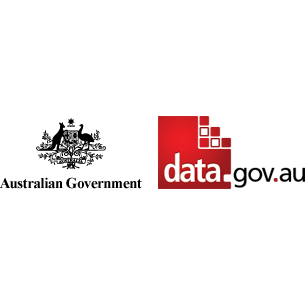Brief description
## **Abstract**The dataset was derived by the Bioregional Assessment Programme from multiple source datasets. The source datasets are identified in the Lineage field in this metadata statement. The processes undertaken to produce this derived dataset are described in the History field in this metadata statement.
Receptor impact models (RIMs) are developed for specific landscape classes. The prediction of Receptor Impact Variables is a multi-stage process. It relies on the runs from surface water and groundwater models at nodes within the analysis extent. These outputs derive directly from the hydrological model. For a given node, there is a value for each combination of hydrological response variable, future, and replicate or run number. Not all variables may be available or appropriate at every node. This differs to the quantile summary information that is otherwise used to summarise the HRV output and is also registered.
## **Dataset History**
There is a key look up table (Excel file) that lists the assessment units (AUIDs) by landscape class (or landscape group if appropriate) and notes that groundwater modelling node and runs, and the surface water modelling node and runs, that should be used for that AUID. In some cases the AUID is only mapped to one set of hydrological modelling output. This look up table represent the AUIDs that require RIV predictions. For NAM and GAL there is a single look up table. For GLO and HUN surface and GW are provided separately.
Receptor impact models (RIMs) are developed for specific landscape classes. The hydrological response variables that a RIM within a landscape class requires are organised by the R script RIM_Prediction_CreateArray.R into an array. The formatted data is available as an R data file format called RDS and can be read directly into R.
The R script IMIA_XXX_RIM_predictions.R applies the receptor model functions (RDS object as part of Data set 1: Ecological expert elicitation and receptor impact models for the XXX subregion) to the HRV array for each landscape class (or landscape group) to make predictions of receptor impact varibles (RIVs). Predictions of a receptor impact from a RIM for a landscape class are summarised at relevant AUIDs by the 5th through to the 95th percentiles (in 5% increments) for baseline and CRDP futures. These are available in the XXX_RIV_quantiles_IMIA.csv data set. RIV predictions are further summarised and compared as boxplots (using the R script boxplotsbyfutureperiod.R) and as (aggregated) spatial risk maps using GIS.
## **Dataset Citation**
Bioregional Assessment Programme (2018) GAL Predictions of receptor impact variables v01. Bioregional Assessment Derived Dataset. Viewed 10 December 2018, http://data.bioregionalassessments.gov.au/dataset/67e0aec1-be25-46f5-badc-b4d895a934aa.
## **Dataset Ancestors**
* **Derived From** [Queensland wetland data version 3 - wetland areas.](https://data.gov.au/data/dataset/2a187a00-b01e-4097-9ca4-c9683e7f4786)
* **Derived From** [Geofabric Surface Cartography - V2.1](https://data.gov.au/data/dataset/5342c4ba-f094-4ac5-a65d-071ff5c642bc)
* **Derived From** [Landscape classification of the Galilee preliminary assessment extent](https://data.gov.au/data/dataset/53c534ba-bf4a-4d2a-a220-e74d72e27969)
* **Derived From** [Geofabric Surface Cartography - V2.1.1](https://data.gov.au/data/dataset/ce5b77bf-5a02-4cf8-9cf2-be4a2cee2677)
* **Derived From** [GAL Landscape Class Reclassification for impact and risk analysis 20170601](https://data.gov.au/data/dataset/316ff486-3f8a-4b3c-8b3f-81c5e529b012)
* **Derived From** [GEODATA TOPO 250K Series 3, File Geodatabase format (.gdb)](https://data.gov.au/data/dataset/96ebf889-f726-4967-9964-714fb57d679b)
* **Derived From** [Queensland groundwater dependent ecosystems](https://data.gov.au/data/dataset/10940dfa-d7ef-44fb-8ac2-15d75068fff8)
* **Derived From** [GEODATA TOPO 250K Series 3](https://data.gov.au/data/dataset/a0650f18-518a-4b99-a553-44f82f28bb5f)
* **Derived From** [Multi-resolution Valley Bottom Flatness MrVBF at three second resolution CSIRO 20000211](https://data.gov.au/data/dataset/7dfc93bb-62f3-40a1-8d39-0c0f27a83cb3)
* **Derived From** [Landscape classification of the Galilee preliminary assessment extent](https://data.gov.au/data/dataset/80e7b80a-23e4-4aa1-a56c-27febe34d7db)
* **Derived From** [Biodiversity status of pre-clearing and remnant regional ecosystems - South East Qld](https://data.gov.au/data/dataset/9b7bcebf-8b7f-4fb4-bc91-d39f1bd960cb)
Full description
GAL Predictions of receptor impact variables v01 - Data FileSpatial Coverage And Location
text: POLYGON ((0 0, 0 0, 0 0, 0 0))
Subjects
User Contributed Tags
Login to tag this record with meaningful keywords to make it easier to discover
Identifiers
- Local : 67e0aec1-be25-46f5-badc-b4d895a934aa
- URI : data.gov.au/data/dataset/56440936-5a19-4d5b-bb9f-de4fffe592fc



